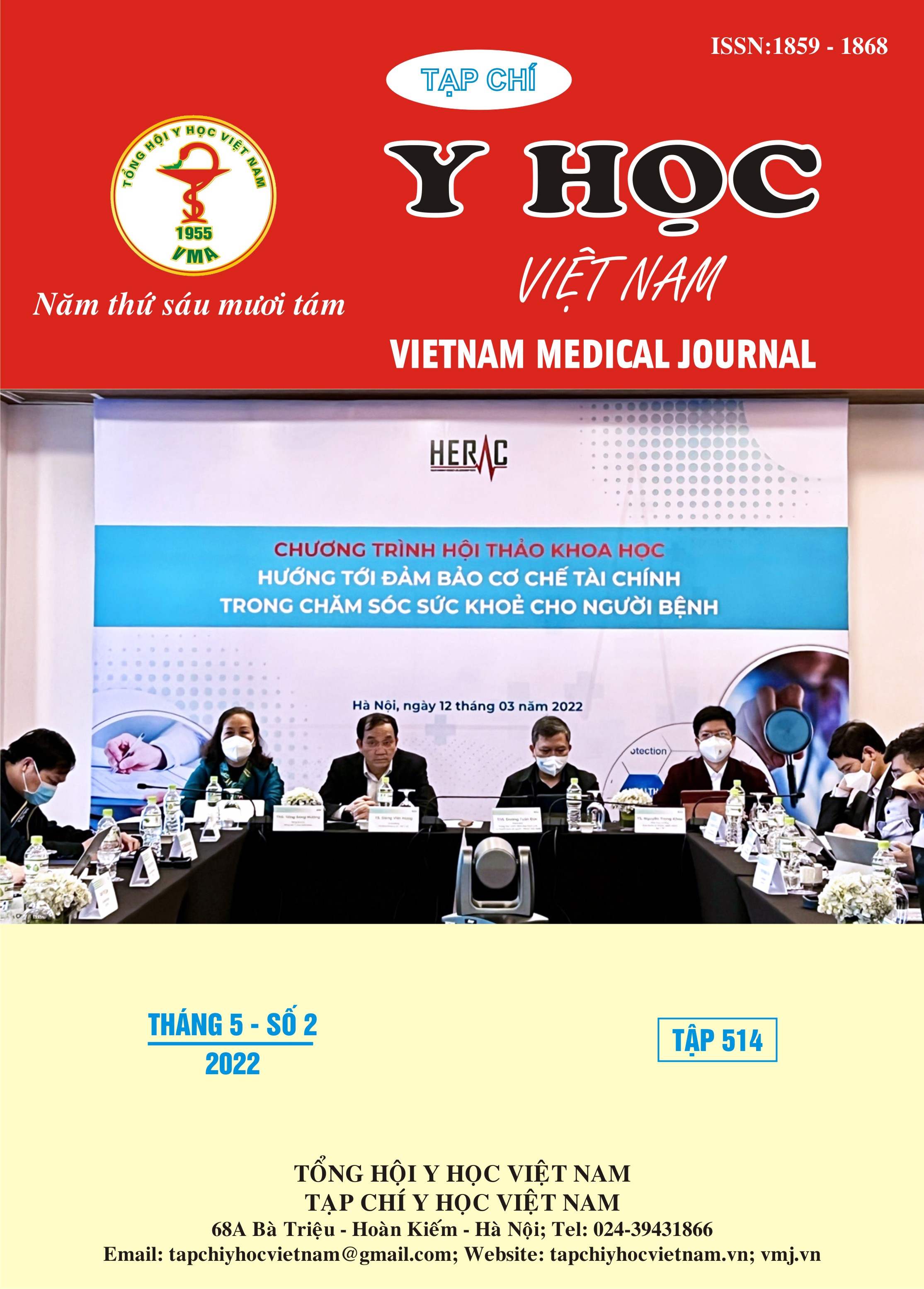CHANGES IN SOME SALIVA BIOCHEMICAL INDICATORS IN CHILDREN WITH PRIMARY NEPHROTIC SYNDROME
Main Article Content
Abstract
Primary Nephrotic syndrome (PNS) is the most common glomerular disease in children with an annual incidence rate of 2-7/100,000 children out of a total morbidity rate of 16/100,000. In Vietnam (1981-1990), 1414 children with PNS were admitted to the National Hospital of Pediatrics, accounting for 46,6% of the total number of patients in the Department of Nephrology – Urology. According to the literature, children with chronic kidney disease have changes in saliva composition when long-term use of drugs in the treatment of diseases affect the risk of children's dental disease. Saliva's functions, including lubrication, cushioning, protection for dental tissue, antibacterial functions, and functions in tasting and digesting food, can be influenced by changes in flow and biochemical composition of saliva. What is the change in salivary secretion in children with PNS who are at the first stage of the disease, at present we have not found any studies comparing the characteristics of saliva at the two stages disease progression. This study aims to describe the change in salivary index of children with PNS at the time of first diagnosis and after 6 months of follow-up. Prospective longitudinal study method was performed in 94 children. Research results show that increasing saliva flow with posterior stimulation improves salivary cushioning ability to reduce the risk of tooth decay in children. The calcium and chlorine content increased, but the phosphorus content in saliva decreased slightly. It was found that the group of children with relapsed disease had low salivary flow, average salivary buffering, and a higher risk of tooth decay and tartar compared with the group of children without recurrence.
Article Details
Keywords
primary nephrotic syndrome, salivary flow, salivary buffering, urea, creatinine, calcium, phosphorus, sodium, potassium, chlorine
References
2. Lê Nam Trà, Trần Đình Long, Đỗ Bích Hằng. Tình hình bệnh thận, tiết niệu của trẻ em được điều trị tại Viện Nhi 1981-1990. Kỷ Ếu Công Trình Nhi Khoa. Published online 1994:161-162.
3. Blue C, Isringhausen K. Raising Oral Health Awareness Among Nephrology Nurses. 2011;85(2):7.
4. Mihalaş E, Matricala L, Chelmuş A, Gheţu N, Petcu A, Paşca S. The Role of Chronic Exposure to Amoxicillin/Clavulanic Acid on the Developmental Enamel Defects in Mice. Toxicol Pathol. 2016;44(1):61-70. doi:10.1177/ 0192623315610822
5. Nikiforuk G. Understanding Dental Caries. Krager; 1985.
6. Martins C, Siqueira WL, Guimarães Primo LSS. Oral and salivary flow characteristics of a group of Brazilian children and adolescents with chronic renal failure. Pediatr Nephrol Berl Ger. 2008;23(4):619-624. doi:10.1007/s00467-007-0718-5Babu NSV, Jana S.
7. Kaczmarek U, Wrzyszcz-Kowalczyk A, Jankowska K, et al. Oral health conditions in children with idiopathic nephrotic syndrome: a cross-sectional study. BMC Oral Health. 2020;20(1):213. doi:10.1186/s12903-020-01197-1
8. Harambat J, van Stralen KJ, Kim JJ, Tizard EJ. Epidemiology of chronic kidney disease in children. Pediatr Nephrol Berl Ger. 2012;27(3):363-373. doi:10.1007/s00467-011-1939-1
9. Laine M. The etect of repeated sampling on paraon-stimulated salivary ¯ow rates in menopausal women. Arch Oral Biol. Published online 1999:3.
10. Chiappin S, Antonelli G, Gatti R, De Palo EF. Saliva specimen: A new laboratory tool for diagnostic and basic investigation. Clin Chim Acta. 2007;383(1-2):30-40. doi:10.1016/j.cca.2007.04.011


